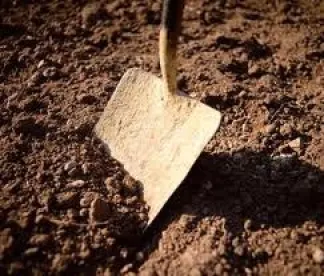The Wisconsin Department of Natural Resources (WDNR) has recently proposed a new guidance document which will have a significant impact on redevelopment of sites in Wisconsin once it is finalized: “Waste Soil Determinations and Identifying Clean Soil,” WDNR publication WA-1820 (March, 2016).
This guidance is likely to be finalized by the end of the year. Although not yet final, it provides a road map for the WDNR’s views on the standards applicable to making a determination that soil used on site is “clean”. This proposed guidance should be considered by all property owners involved in development projects.
This new guidance document will cover the following development activities:
-
Excavation of soil required for underground features on development sites
-
Exportation or importation of soil for road construction or utility trench projects
-
Grading soils on sites to achieve design grades for new building construction, demolition, road and utility construction
-
Importation or exportation of soil for grading or fill needs on development sites
Parties adhering to this new guidance document will incur higher costs and time delays to ensure compliance with these new “clean soil” standards. However, the cost of not complying could be higher in the form of future cleanup liability for site developers who handle soils on sites that do not meet the new standards contained in this guidance document.
This newsletter will provide a general overview of the important new standards contained in the “clean soil” guidance. However, there is no substitute for taking a “deep dive” into this guidance document to understand the requirements as they apply to a site specific development project.
OVERVIEW OF CLEAN SOIL GUIDANCE
Under the proposed guidance, soil that is excavated, graded or removed from a site can fall into three regulatory categories
-
Clean Soil. This category of soil can be used on any site and is exempt from WDNR regulation.
-
Restricted Use Soil. This category of soil contains contaminated soil that requires a low hazard exemption issued by WDNR to be reused on a site that is not a solid waste landfill.
-
Soil Required to be Managed as Solid Waste. Contaminated soil (other than low hazard exempt soil) must be managed for disposal in a solid waste or hazardous waste landfill.
The new clean soil guidance provides standards for determining whether soil constitutes “clean soil” which would be exempt from regulation by the WDNR for reuse on the site without cleanup liability. In general, the following standards apply for defining “clean soil”:
-
No detectable concentrations of chemicals of concern (i.e., VOC’s, pesticides, PCB’s)
-
Contains naturally occurring compounds of concentrations below WDNR established background threshold values for these compounds
-
Contains either no PAH’s or PAH’s are detected in concentrations below direct contact concerns and groundwater protection standards for these substances
IMPACT OF THESE CLEAN SOIL STANDARDS
Given the restricted standards for defining “clean soils” that are exempt from regulation under this proposed guidance, it would be difficult to find sources of soils that would meet these standards. Most urban sources of soil contain some evidence of past industrial use or are characterized by past fill activities (i.e., demolition debris, wood, ash, coal ash, foundry sand, etc.). In particular, sources that will qualify as “clean” are soils that have little or no previous history of fill, commercial or industrial development activity at the site. In particular, sources of soil that will likely meet the clean soil standards would come from the following land uses: agricultural (assuming no history of extensive use of pesticides), nonmetallic mines, residential and open space.
The following are some important recommendations to follow for the future development of sites in Wisconsin:
-
Ignorance is Not Bliss. When considering reuse of soils on sites and/or importing soils for use on a site, careful consideration must be given to establishing a testing protocol in accordance with the clean soil guidance prior to such use to determine whether these soils are “clean” within the meaning of the guidance. In the event the soil samples fail to meet this standard, the soil importation could create additional liability for this site developer unless a soil exemption for low hazard soils is obtained by the WDNR prior to the reuse of those soils on site.
-
Time is Money. Time delays will be associated with the requirement for testing and the possible need to seek WDNR approval for low hazard exemptions for soils to be used on a development site. These time delays should be factored in the construction timetable for such projects.
-
Soil Seller Beware. A property owner that is being approached as a source for soils to be used at another property needs to be concerned about the amount of testing that may be required to meet the guidance documents. The “source” property owner must be concerned about the impact of soil test results for that property owner. In particular, if contaminants are detected in the soil samples in excess of cleanup standards, such sampling results may impose a reporting and possible investigation/remediation obligations on the “source” property owner under the Wisconsin Spill Statute. See Wis. Stat. §292.11.
-
The Cost of Clean. These new standards will likely increase costs associated with use and reuse of soil on properties proposed for development. The cost will include testing requirements as well as possible investigation remediation obligations on the site developer depending upon the soil test result.
As mentioned at the outset of this article, there is no substitute for a thorough understanding of the possible implication of this new proposed guidance, as well as the final guidance, on site specific development projects. While this new standard may add to the cost of compliance, ignoring this standard at the front-end of the project could increase future cleanup costs for soils used in development projects that fail to meet these new standards.



 />i
/>i
